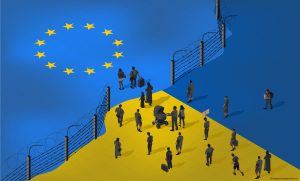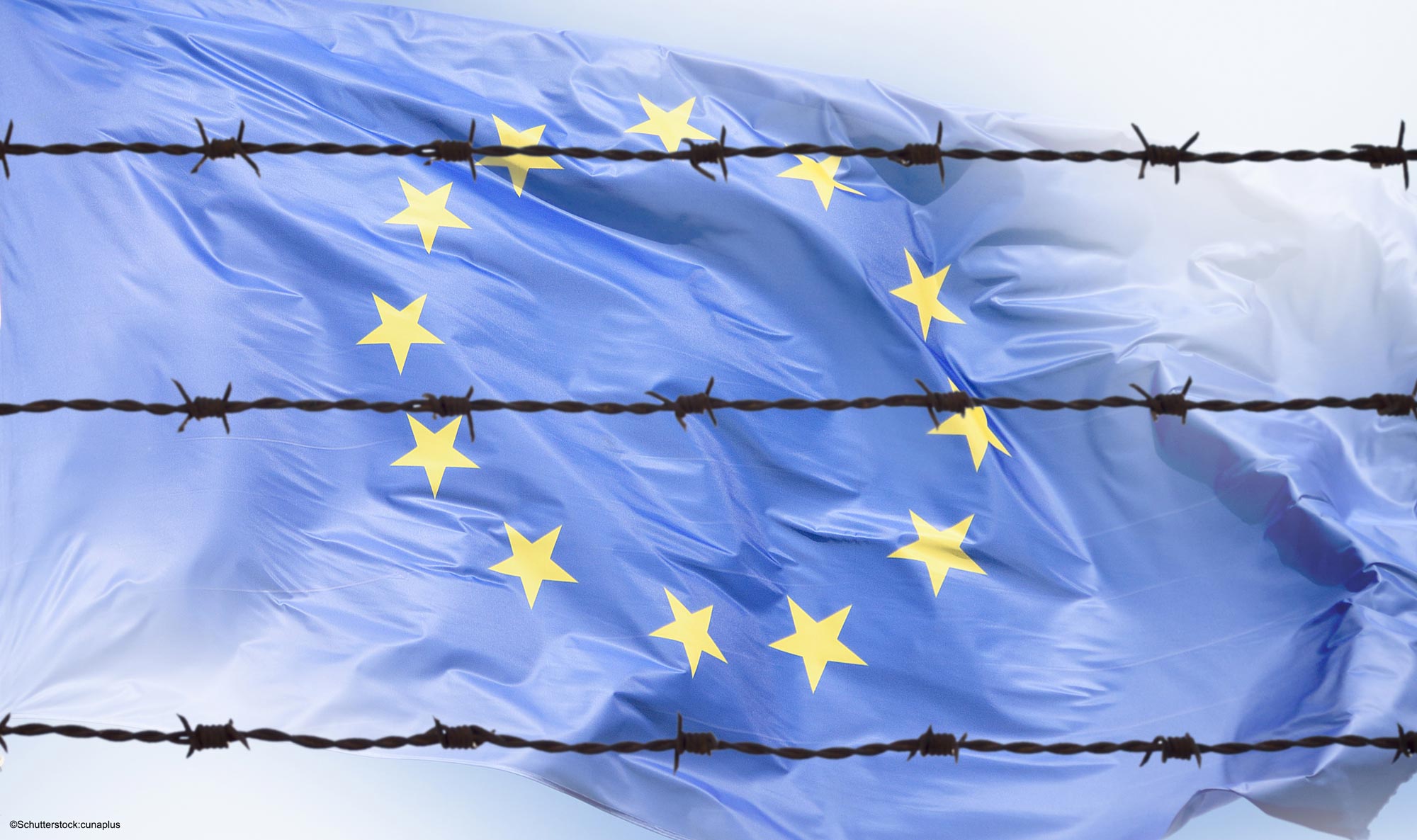
Read more
Blog, Public Attitudes
Europeans welcome Ukrainian refugees but governments need to show they can manage
A new study carried out at the Migration Policy Centre shows strong support for people displaced by the war in Ukraine and that governments need to show that they have a plan to manage...
Since its launch in 2020, the negotiations concerning the EU’s New Pact on Migration and Asylum have remained largely deadlocked. Member States are struggling to find a common agreement on crucial issues, such as the establishment of fairer procedures for the regulation of migration flows in the EU. Failing to come to terms on a shared course of action, member states have continued to act independently on the issue of irregular migration. It seems they have at least found some common ground via the implementation of harsher border control and push-back measures for asylum seekers trying to reach Europe via the Mediterranean sea. The release of the EU Action Plan Against Migrant Smuggling (2021-2025) on 29 September 2021 is another clear step in this direction by reaffirming an approach overwhelmingly based on a security-centred response to irregular migration.
The EU Action Plan calls for “a whole-of-route approach which combines international cooperation and coordination with our partners and between the Member States to break the business model of smugglers”. On paper, this approach is portrayed as the silver bullet to “deliver a more resilient, more humane and more effective migration and asylum system.” By looking at the different routes from a broad perspective and investigating the patterns and profiles of migrants along the whole route, a whole-of-route approach should provide a more comprehensive understanding of the dynamics of the routes, including the specific risks migrants face. In practice, however, the form taken by the approach is nothing other than a set of anti-smuggling operational partnerships with transit countries. Under this light, the “whole of route” approach is simply a repackaged, old migration policy strategy: migration containment via border control offshoring. As such, the whole of route approach might be effective at temporarily countering irregular migration, and may lead to some momentary changes on migration pathways. However, the EU Action Plan will be considerably less effective at protecting migrants, and most importantly, at eradicating human smuggling or other crimes associated with irregular migration.
Both past and current efforts by the EU to fight human smuggling remain overwhelmingly security-centred. Yet, can we claim that they been successful in accomplishing its intended goals of protecting migrants and fighting human smuggling? Simply put, the answer is no.
- EU policy efforts have not substantially curbed human smuggling and related criminal activities. Research has not found a direct correlation between the use of smuggling networks and the volume of unauthorized migrants on the move. For example, a more proactive law enforcement action since the EU-Turkey Agreement 2016 has substantially stemmed the flow of people along the Eastern Mediterranean route; yet, it has also led to an increase in smuggling activities across the Western Balkan route. That said, along the Central Mediterranean, the externalization of border controls and more restrictive migration policies appear to have accompanied a decrease in for-profit smuggling activities. However, this change does not point to a clear disruption of crime: the intensification of EU migration enforcement policies in the Southern neighborhood have contributed to the emergence of an ‘offence displacement.’ That is, it has pushed-out smugglers from an increasingly criminalized, dangerous market, into other criminal activities in which they can employ and profit from their skills. As our research has shown, people involved in smuggling move or seek opportunities in other criminalized markets that may in fact involve greater risk but improved returns. This is clearly illustrated by the involvement of former migrant smugglers in the ever-growing drug, gold and fuel smuggling markets in the Southern Neighborhood with even greater security repercussions in the region and beyond.
- The EU policy approach has not successfully protected migrants. Smugglers try to reduce the likelihood of apprehension by employing a variety of strategies – such as setting off on longer and therefore more dangerous journeys, choosing unsafe points of embarkation, letting inexperienced migrants pilot boats on their own in exchange for a free journey, and abandoning their human cargo to the mercy of vessels in rough seas. All this considerably increases migrants’ risks. While the EU could argue that its efforts are successfully protecting migrants by preventing them from leaving transit countries, we are left wondering whether this outcome has benefitted them or actually aggravated their plight. An overabundance of migrant testimonies show how local authorities arbitrarily arrest, abuse, torture and at times even murder migrants. Empirical evidence also shows that the intensification of law enforcement efforts across smuggling routes has strengthened the interdependence between human smuggling and human trafficking. Evidence from Libya has shown how some migrants voluntarily accept or even pursue situations characterized by severe forms of exploitation (including labour and sex trafficking), in an effort to improve their chances to depart from an unwanted place, but also to increase their likelihood of survival in a context of protracted immobility. Multiple researchers have shown that enforcement specially in North Africa has in fact pushed smuggling services out of the financial reach of many of those seeking to move, leading to the increase of self-organized migratory efforts. These are more precarious, more lethal, and also highly criminalized journeys.
If the intended goal is the suppression of smuggling networks, security measures can be effective only if accompanied by other solutions. A truly effective answer to human smuggling would require the EU and its state members to concentrate on reducing “demand” more than curbing “supply.” Accordingly, the first decisive step toward a more durable radical solution for the current crisis demands the opening of new channels of legal entry and the reinforcement of existing ones for refugees and asylum seekers, presumably the majority of people smuggled by sea. The war in Ukraine and the refugee response that ensued has shown how the EU can effectively and expeditiously process people fleeing from a humanitarian crisis in a safe, orderly and legal way, only if the political will existed. Yet, this approach has been systematically ignored in the context of Asian and African migration. The violation of international rules on asylum is certainly creating an enduring memory of the EU’s incapacity to embrace the very principles upon which it is founded. But one thing is clear: it is not human smuggling that is putting at risk the very future of the European Union, it is rather its incapacity to develop a common political answer to migration based on solidarity principles and balanced responsibilities.

